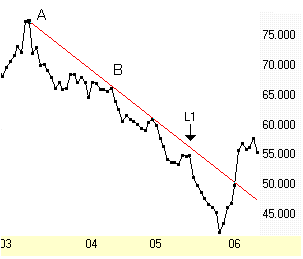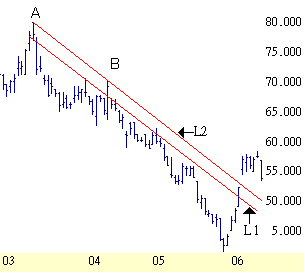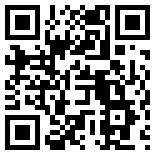|
Prosticks Articles
經 濟 日 報 6 月 15 日
突 破 聚 焦 點 趨 勢 線 買 貨
在 股 票 及 外 匯 市 場,很 多 投 資 者 會 利 用 趨 勢 線 (trendline)
作 技 術 分 析 來 決 定 買 賣。簡 而 言 之,當 價 位 穿 破 阻 力(resistance)
趨 勢 線 時 買 入,跌 破 支 持 (support) 線 時 賣 出。
傳 統 方 法 一 直 是 利 用 高 低 點 價
位 來 繪 畫 趨 勢 線 的。阻 力 線 是 由 兩 個 明 顯 的
高 點 繪 畫 而 成,支 持 線 則 是 由 兩 個 低 點 畫 成。如
投 資 者 已 知 道 乾 坤 燭 圖 之 聚 焦 點 是 代 表 當
天 成 交 量 最 大 之 價 位,當 會 明 白 到 趨 勢 線 亦
可 從 聚 焦 點 繪 畫。事 實 上,由 聚 焦 點 所 繪 畫
之 趨 勢 線 能 提 供 早 人 一 步 及 更 準 確 走 勢 信
息。
較 傳 統 趨 勢 線 有 效

圖 1 是 新 鴻 基 地 產(0016)之
乾 坤 燭 聚 焦 點 線 圖,由 A 和 B 的 聚 焦 點 可 繪 畫 一 條 阻 力 趨 勢
線 L1 。股 價 穿 破 阻 力 線 後 急
速 大 幅 上 升,從 而 顯 示 其 趨 勢 線 之 有 效 性。

圖 2 是 新 鴻 基 地 產 柱 狀 圖,趨 勢 阻 力
線 L2 是 由 傳 統 A 和 B 的 最 高 價 位 繪 畫 而 成,而
L1 則 是 原 先 聚 焦 點 趨 勢 阻 力 線。
相 對 之 下,投 資 者 會 留 意 到 聚
焦 點 趨 勢 線 L1 早 一 步 提 供 入 市 訊 號
(50.75 元),而 傳 統 高 點 趨 勢 線 的 入 市
訊 號 是 53.85 元,超 過 3 元 之 差。其 實,當 天 股 價 是 裂 口
性 高 開 超 越 趨 勢 線 L2,如 利 用
L2 入 市 者,只 能 在 56 元 (即 開 市 價)以 上 才 能 買 到 貨。
利 用 聚 焦 點 繪 畫 之 趨 勢 線 通 常
會 較 為 準 確 及 能 夠 預 早 提 供 買 賣 訊 號。高 準
確 性 是 因 為 聚 焦 點 反 映 最 大 成 交 量,是 市 場
真 正 的 力 量。預 早 性 是 因 為 聚 焦 點 趨 勢 線 通
常 是 低 於 傳 統 趨 勢 阻 力 線,或 高 於 傳 統 趨 勢
支 持 線。由 於 高 低 價 位 不 能 反 映 市 場 實 況,甚
至 可 能 有 人 為 性 因 素,其 趨 勢 線 往 往 會 出 現
假 突 破 之 類 誤 導 情 況。
(前 幾 篇 乾 坤 燭 簡 介 可 從 乾 坤 燭 網 站
www.prosticks.com
常 見 問 題 頁 內 觀 看。)
| 

